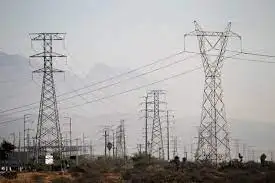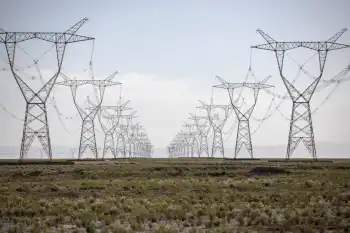Quebecker unlocks superconductivity mystery
By Canada.com
Arc Flash Training - CSA Z462 Electrical Safety
Our customized live online or in‑person group training can be delivered to your staff at your location.

- Live Online
- 6 hours Instructor-led
- Group Training Available
The intriguing yet largely mysterious field of superconductors – materials that offer little or no resistance to electricity – has taken a significant leap thanks to just-published findings by Université de Sherbrooke professor Louis Taillefer.
His latest discovery portends big changes in our daily lives that could be only a decade away, Taillefer said, likening it to the breakthrough discovery of the transistor in 1947.
"That was a huge revolution," he said. "That led us to the semi-conductor, which led us to computers. Sixty years later, we have Google."
Taillefer, who collaborated with University of British Columbia scientists, published the team's most recent findings on high-temperature superconductivity in prestigious science journal Nature.
They explain the "pseudo-gap" phase, when copper oxides are cooled to minus 100 Celsius, and the electrons move in the same direction, enabling electricity to flow flawlessly.
The findings reveal an underlying force not previously understood, 50-year-old Taillefer said.
While superconductors work best at the lowest theoretically possible temperature – absolute zero, or minus 273.15 Celsius – Taillefer's work focused on the relatively higher and easier to achieve minus 100 Celsius. His findings also reduce the theories explaining high-temperature superconductivity from dozens to just a few.
The holy grail of the field would be superconduction at room temperature, Taillefer said. "Now we're pretty sure we know how to get there."
Achieving that would mean MRIs could be much smaller, even portable, since they would not need large and hugely expensive cooling systems. Five times more electricity could be transmitted in the space now required for standard transmission lines.
"This is our next challenge," Taillefer said. "We will try to figure out what's behind the magic with superconductors" at warmer and room temperatures.
The research involved years of painstaking observation on crystals of yttrium barium copper oxide super-cooled in a special refrigerator. The cleanliness of the crystals, produced by the team at UBC, went a long way to providing the best results, he added.
Taillefer, a Montreal native, was first attracted to the field of study in 1992 as a professor at McGill University and then later at UBC.
"I like it because it's a bit of a jungle," he said. "Superconductivity is easy to see. It's not easy to understand."
Derek Nichols, a high-school science teacher at Montreal's Royal Vale School, said Taillefer's work has fascinating potential for young students interested in science.
"I'm excited by it," he said. "Unleashing the power of magnets will make a lot of things more affordable and more practical. It's really easy to excite young students with these kinds of possibilities."
Scientific discovery is moving much faster than most people realize and government support for such research is crucial to the technology sector, Nichols said. "Most kids in elementary school right now will be in jobs that don't yet exist."
At Taillefer's Sherbrooke lab, the next step toward the holy grail of superconductivity is buying some equipment with $10 million in new funding just received from the Canada Foundation for Innovation, which pairs tax dollars with private grants to fund science projects.
Taillefer plans to buy a coil of superconducting wire that will create the largest magnetic field in Canada.











